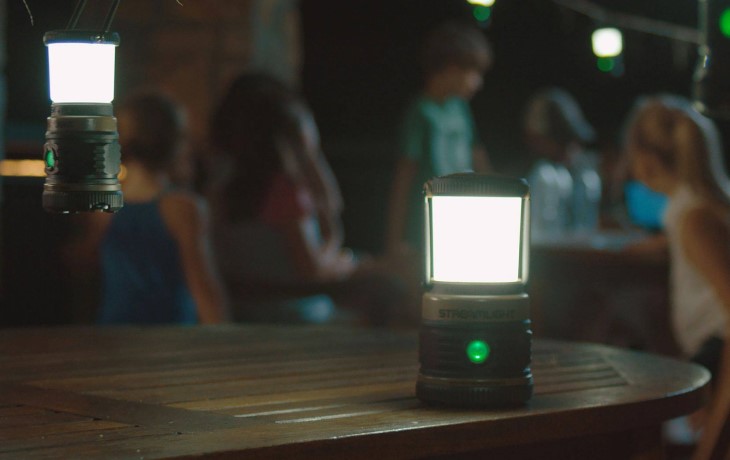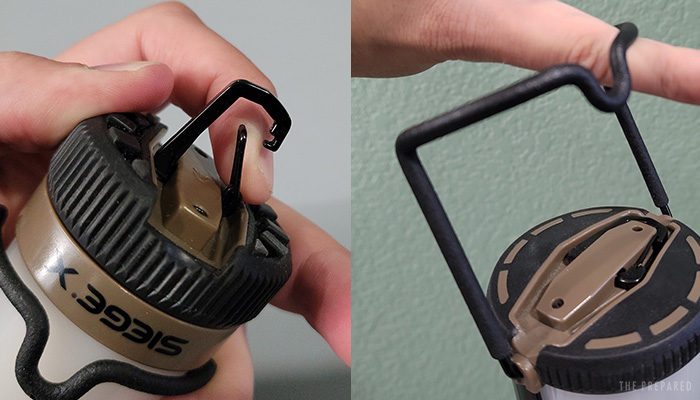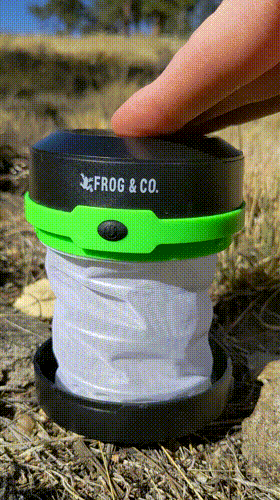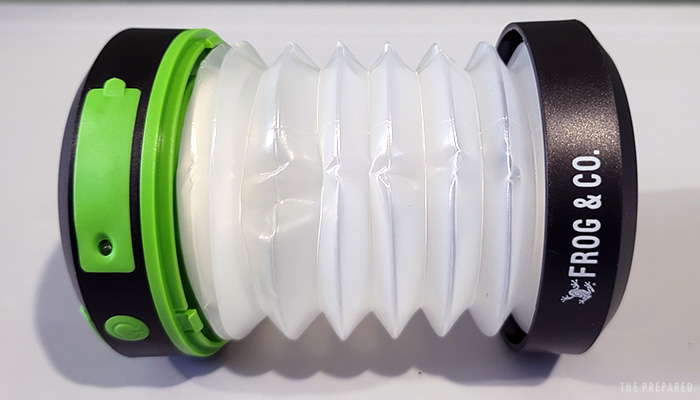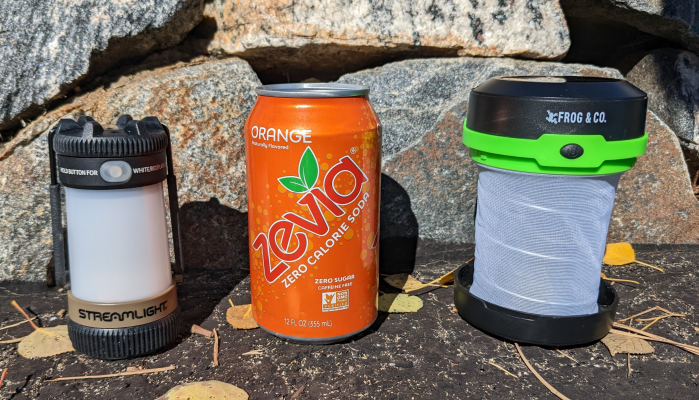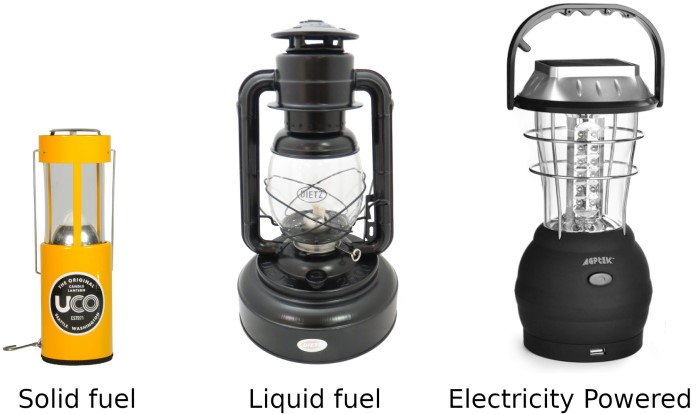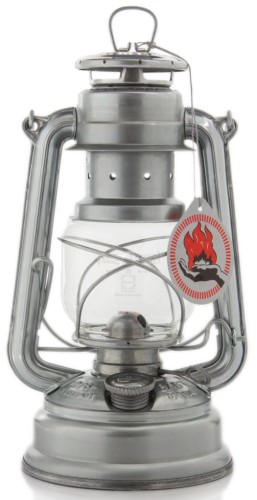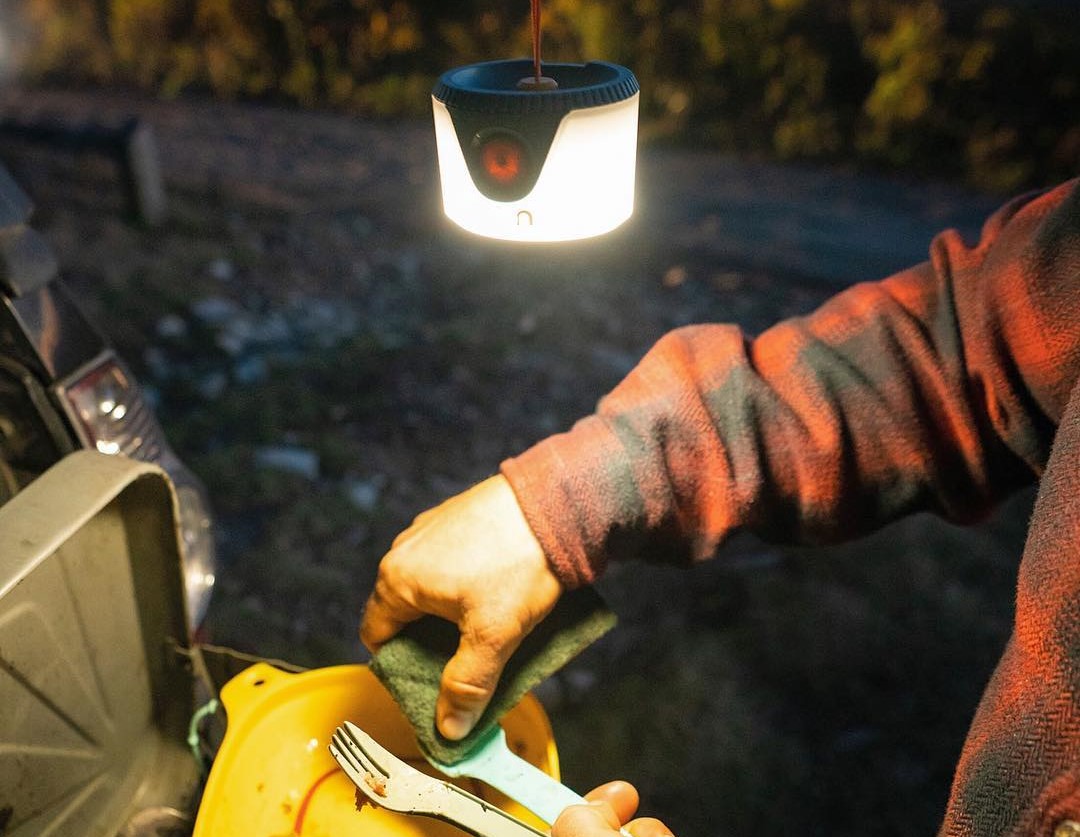Although candle or fueled lanterns are a decent backup and can put off a small amount of heat, many people have moved to modern LED electric lanterns that are energy efficient (and easy to recharge with portable solar or a battery pack), bright, and can act as a charging hub for other USB devices. Plus, you don’t have to worry about scarce fuel or candles.
The best times to use lanterns are when you need to fill an area with stable light. Maybe your house loses power during a winter storm and you want a few hours of soft light while trying to relax as your family gathers in one area to conserve heat.
When away from home, people will often hang lanterns inside of a tent, place them on an outside tabletop for working around camp, or as basic lighting in an improvised shelter or evacuation area. The soft glow makes it easy to find your way back when nature calls in the middle of the night, for example.
More: Best emergency candles and space heaters
Every home should have at least one lantern as a room-filling backup when the power is out. If there are multiple people in your home, it’s not a bad idea to get more so that every person in the house can have one — in longer-term emergencies, that will make it easier for people to hang out or sleep in different rooms, use the bathroom, and so on.
Some people pack a lantern in their go-bag but be mindful that many of these lanterns are bulky. That’s why more space-conscious packers prefer a headlamp since if you really need room-filling stationary light in a bug out, you can always hang the headlamp like a lantern or even wrap it in a diffuser that spreads the normally-targeted beam around the room. Some headlamps even have official diffuser clip-on accessories for this purpose.
Basics:
- Fueled and candle lanterns will produce a little bit of heat. It won’t warm up a cold room, but it could be enough to keep you alive or warm water and food.
- To fill an area with light, aim for 10-20 lumens (the measurement of light output) per square foot. LED lanterns generally put out more light than similar candle or fueled options.
- Fueled lanterns typically burn for 8-9 hours. Electric lanterns vary, but some models last up to 30 hours on a charge.
- Since lanterns are designed to shine for hours, they do a better job of not overheating the way other forms of light can.
- Because of how common solar charging is, electric lanterns are likely going to last you longer in a major SHTF event than candle or fueled lanterns because you’ll eventually run out of candles or fuel.
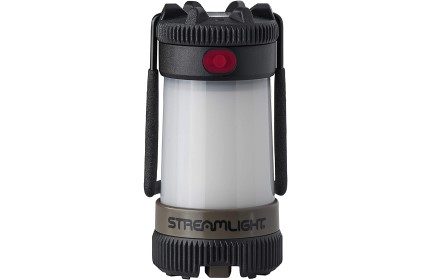
For go-bag:
Streamlight Siege X
The X comes with a removable 18650 battery that has a built-in micro USB charging port, but it can also run on two CR123A batteries. There’s an integrated ‘flashlight’ on the top (pictured below) that you can point with. The main lantern has multiple levels of brightness and a red-light mode.
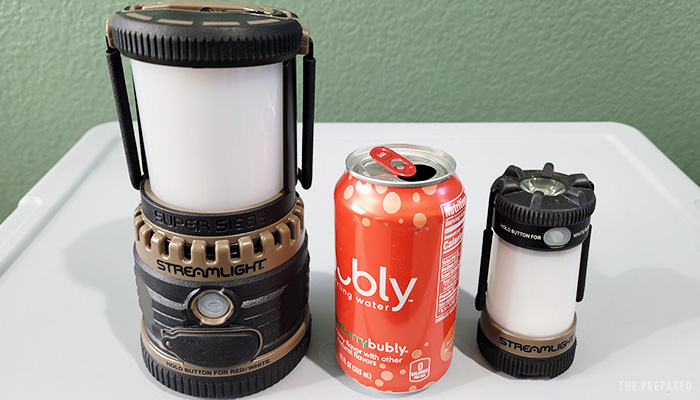
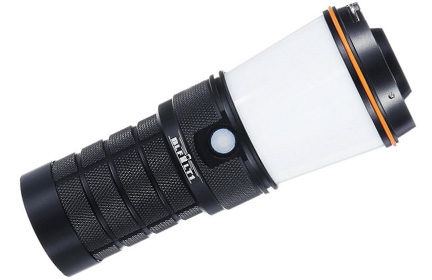
Huge runtime:
BLF LT1
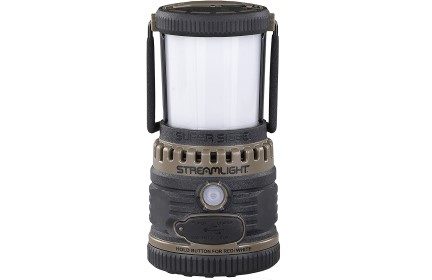
Built like tank:
Streamlight Super Siege
Lanterns kept at home can go bigger and brighter, often with extra features such as built-in USB device charging. The Streamlight Super Siege is the largest of that series, while the BLF LT1 is a fan-favorite among ‘light nerds.’ Some key differences between the two: The BLF is often around 20% cheaper than the Streamlight, but built less ruggedly. The Streamlight needs a wall-wart “barrel” plug (included) while the BLF can charge via the more modern USB-C (our preferred choice for standardization). The BLF is also intended for more advanced users — it has basic functions, but there’s a ton of features you need a manual to work through since all of the deeper settings are done through a single button. One reason the Super is so large is that it has a watertight compartment in the bottom for things like cash or keys.
The Siege has a built-in battery while the LT1 uses four removable 18650 batteries. Both have a final capacity around 10,500-11,000 mAh. The Siege puts out 1,100 max lumens compared to the LT1’s 600, but many LT1 users love the huge runtime and find the 600 lumens to be enough for the need. An example of the LT1’s more advanced features are color temperature settings (2700-5000K), smooth ramping, battery and heat protection, and tripod mounts.
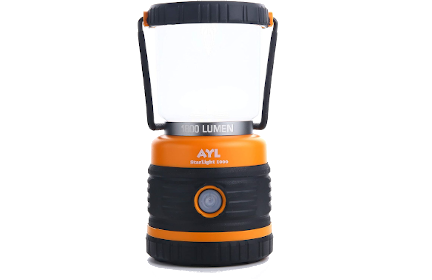
Uses D batteries:
AYL LED camping lantern
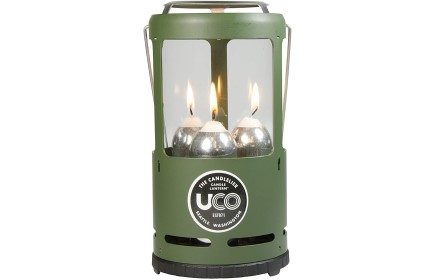
Light and heat:
UCO Candlelier Deluxe Candle Lantern

Puck style:
Survival Frog Pocket Light 3.0
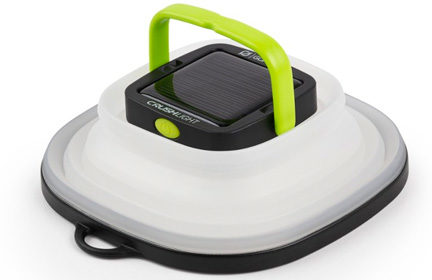
Pyramid style:
Goal Zero Crush
The Survival Frog Pocket Light 3.0 is the best collapsible lantern we’ve tried in the field. A slight twist of the compact puck and the spring expands the plastic mesh cloth to create the ‘lantern’.
As you can see, this newer version with the fabric is more durable and isn’t as prone to breaking compared to the hard plastic accordion in the below pictured previous model. Many similar models use the accordion action, such as the Hybridlight Puc 150 and the Goal Zero Crush.
The obvious benefit of this collapsible model is getting the room-filling light of a lantern in a smaller stored package — although you don’t really save much size over the Siege X
The Survival Frog Pocket Light 3.0 has the ability to charge USB devices, but the battery is so small that it doesn’t matter. The integrated solar panel on top is also too small to be a reliable source to charge up this unit, so bring a power bank or portable solar panel if you want to keep this and other devices topped off.
The Nite Ize Radiant 200CL is a basic but more durable model than the accordion styles because the lantern globe is a solid piece that slides down into the housing, collapsing the height by about half when stored. While it’s one of the collapsible styles we think is least likely to break, it’s otherwise pretty bare-bones, and the designers wasted a lot of storage space with the rigid pillars on top for the spring-loaded holding clip. We include it here in case you’re looking for this style, but frankly, we’d skip it.
Contenders
Although not currently top picks, these models are worth a look if you want more shopping options:
LED lanterns:
- AYL LED Camping Lantern
- Coleman LED Lantern or the multi-panel version
- Fenix CL30R or CL26R
- Goal Zero Lighthouse 600
- Ohlux Camping Touch Lamp
- Tough Light
- Rayovac Sportsman
- UCO Sprout Hang-Out Rechargeable Camping Lantern
- LuminAID PackLite Titan
- Survival Frog QuadPod Camping Lantern
Fueled lanterns :
- Coleman Northstar Propane Lantern
- Coleman One Mantle Kerosene Lantern
- Coleman Premium Dual Fuel Lantern
- Coleman QuickPack Deluxe Propane Lantern
- Dietz Jupiter Hurricane Kerosene Oil Lantern
- Feuerhand Hurricane Kerosene Lantern
Be prepared. Don’t be a victim.
Want more great content and giveaways? Sign up for The Prepared’s free newsletter and get the best prepping content straight to your inbox. 1-2 emails a month, 0% spam.
Solid fuel lanterns
Lanterns powered by candles fall under the solid fuel category. These lanterns are great for ease of use and are shelf-stable, but give the least amount of light compared to other methods.
Candles can present a slight fire risk. Melted wax can be annoying to clean out of your lantern, and they are generally a bit on the heavier side because of the need to store multiple candles.
One of the benefits of candle lanterns is that they provide a small amount of heat. Candle lanterns like the UCO Candlelier Deluxe Candle Lantern can be used to boil water or transfer heat to a cooking surface.
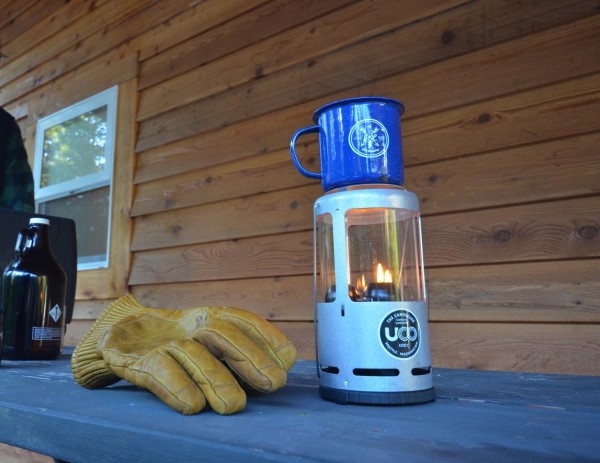
Liquid fuel lanterns
There are multiple lantern types within this category.
One advantage of liquid fuels is that they can be stored in bulk easier than an equivalent amount of candles. Liquid lanterns typically produce more light than candle versions, with just as much (or better) heat output.
If you already have a specific type of fuel around for other gear (eg. propane), then it makes sense to get a lantern using that same fuel. Any pros and cons between the fuel types are trivial compared to just storing more of what you already use.
Liquid fuel will create carbon monoxide. Your home should have a battery-powered carbon monoxide detector anyway, but if not, here’s yet another reason to add one.
Review: Best gas can
Most liquid fuel lanterns rely on a wick. A wick draws up fuel through capillary action and is vital for controlling the rate of combustion.
Once a wick is used in one type of fuel, use it only for that type of fuel. Buy a large roll of spare wick for your preps and for swapping out fuel types. You should be fine with any lantern wick from Amazon, eBay, or your local craft store — they are all just strips of cotton.
But you need to look out for the width and make sure that it will fit in your lantern. Another thing to consider with selecting spare wicks is fuel consumption and light output. A wider wick will produce more light, but will also use more fuel. A ½” wick uses ¼-½ ounce of oil per hour depending on the height and intensity of the flame and quality of the oil. ¾” wicks will burn about an ounce an hour.
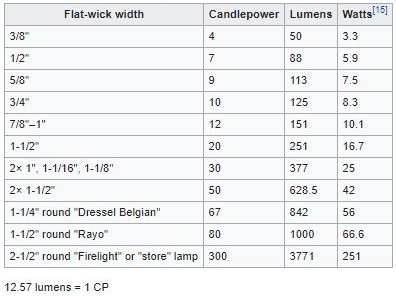
Kerosene wick
Kerosene is used for everything from jet fuel to cooking. The world consumes about 50 million gallons (190 million liters) of kerosene a day — that’s more than 75 Olympic-sized swimming pools! So even though it isn’t a commonly used fuel in North America, it is a tried and true method of heat and light that’s often used in places like Africa and Asia.
Kerosene is cheap and common, found at most gas stations, hardware stores, and grocery stores.
Kerosene lanterns have various light output settings depending on how high or low the wick is. You turn the little knob on the side of the lantern to raise or lower the wick. Too low and you may snuff out the flame. Too high and it will not be able to burn the fuel fast enough, producing dark soot on the inside of your globe (the glass portion of the lantern) and a strong kerosene smell. To get the most amount of light, raise your wick until you start to see soot and black smoke coming from the wick, and then slightly lower it.
This isn’t a miracle fuel, though, as it produces carbon monoxide and other chemicals that can cause long-term health damage if not properly ventilated. Kerosene also stinks while you are refilling your lanterns, so do this outside. But when burning you don’t notice the smell as long as your wick is low. Kerosene lanterns can leak, regardless of price point or quality, so place a non-flammable dish under your lantern.
Pressurized kerosene
Pressurized kerosene lanterns vaporize the fuel over a mantle (ceramic mesh sack) instead of burnt through a wick. This produces more light than a wick version.
This type of lantern may not be the best for the average user or for emergency preparedness because they are more complex, delicate, expensive, and time-consuming to light.
Lamp oil
Most of your wick kerosene lanterns will also be able to burn lamp oil. Lamp oil can be a cleaner version of kerosene, paraffin, or a vegetable oil. However, lamp oil is more expensive and less common than kerosene.
Propane
Like LED lanterns, some propane lanterns can produce over 1,000 lumens of light. Propane is a common fuel source available at nearly every gas station, hardware store, and grocery store. You can use the same one-pound propane canisters found at stores like REI and Walmart for other camping gear. While you can refill the disposable one-pound canisters, there is a safer and legal option by the brand Flame King.
If you do end up going with a propane lantern, like the classic Coleman lantern, make sure you get extra mantles as they are delicate and can be easily broken. Without a good mantle, you won’t be able to use your propane lanterns.
Gasoline and diesel
While the above kerosene lanterns could burn diesel fuel in a pinch, this is not recommended. Diesel will produce lots of soot and toxic fumes. Unleaded gasoline can be used as fuel, and lanterns like the Coleman Premium Dual Fuel Lantern, can run on Coleman’s proprietary fuel blend or unleaded gasoline.
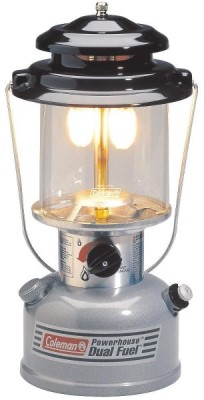
Electric lanterns
Pros:
- Energy efficient
- Very bright
- Don’t create heat or fumes
Cons:
- Requires power
- Doesn’t create heat
- No real way to repair it yourself
- Theoretically susceptible to an EMP attack
Electric lanterns can be compact LED lanterns, such as the UCO Sprout Hang-Out rechargeable Camping Lantern which puts out 100 lumens and weighs a paltry 64 grams, or large lanterns like the Streamlight Super Siege or Tough Light, which can put out over 1,000 lumens and last for over 40 hours on one charge (or a set of batteries.)
Some models have built-in rechargeable batteries while others run on D, AA, or AAA batteries. Models with built-in batteries are charged either via a USB cable — which is nice because you’ll already have those in your kit anyway — or an older style plug that requires you to carry that adapter with you, which is obviously less preferable.
Review: Best rechargeable and best disposable batteries
Some electric lanterns like the Streamlight Super Siege also work as a power bank and allow you to charge small USB electronics like cell phones. That feature is great, but treat it as a nice-to-have backup, not your main power storage — carry a proper power bank for that.
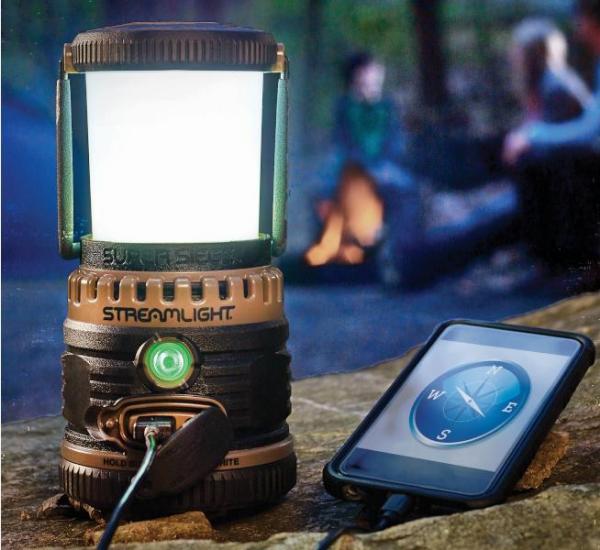
Improvised or cheap lanterns
It’s possible to create the same lighting effect without a proper lantern using random materials around you. The result won’t be nearly as good, but it’s handy backup knowledge:
- You can make a lantern using a bit of cooking oil and an orange
- Strap a headlamp to a milk jug full of water for diffused lantern action
- Turn an old soda can into a candle lantern
- Stick a candle in a mason jar
- Point a flashlight at the ceiling and the light will naturally bounce back around the area
Lantern tips
- Placing a mirror or reflective piece of metal behind your lantern will help reflect the light if you don’t want full 360-degree coverage.
- If you have LED lanterns that run off rechargeable batteries, make that part of your annual prep review.
- If your lantern uses disposable batteries, remove them when not in use so they don’t corrode.
